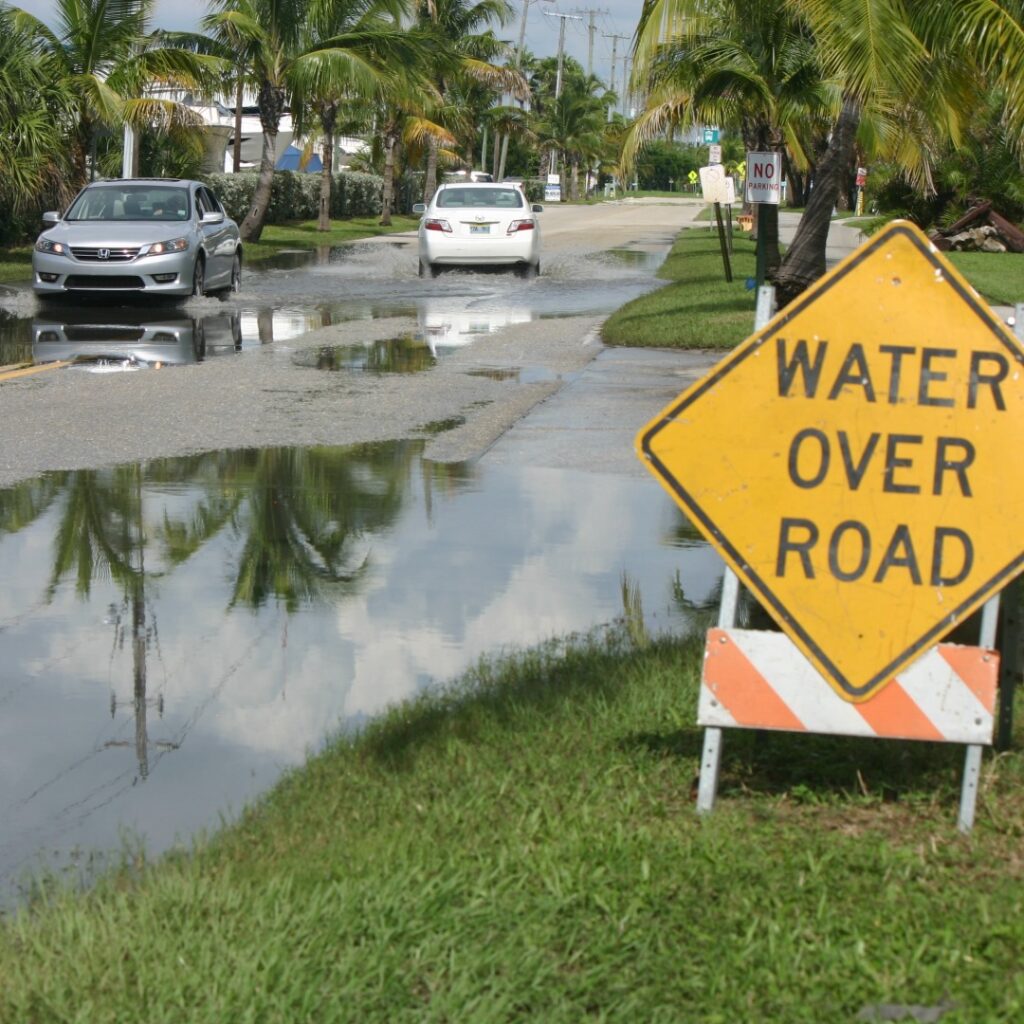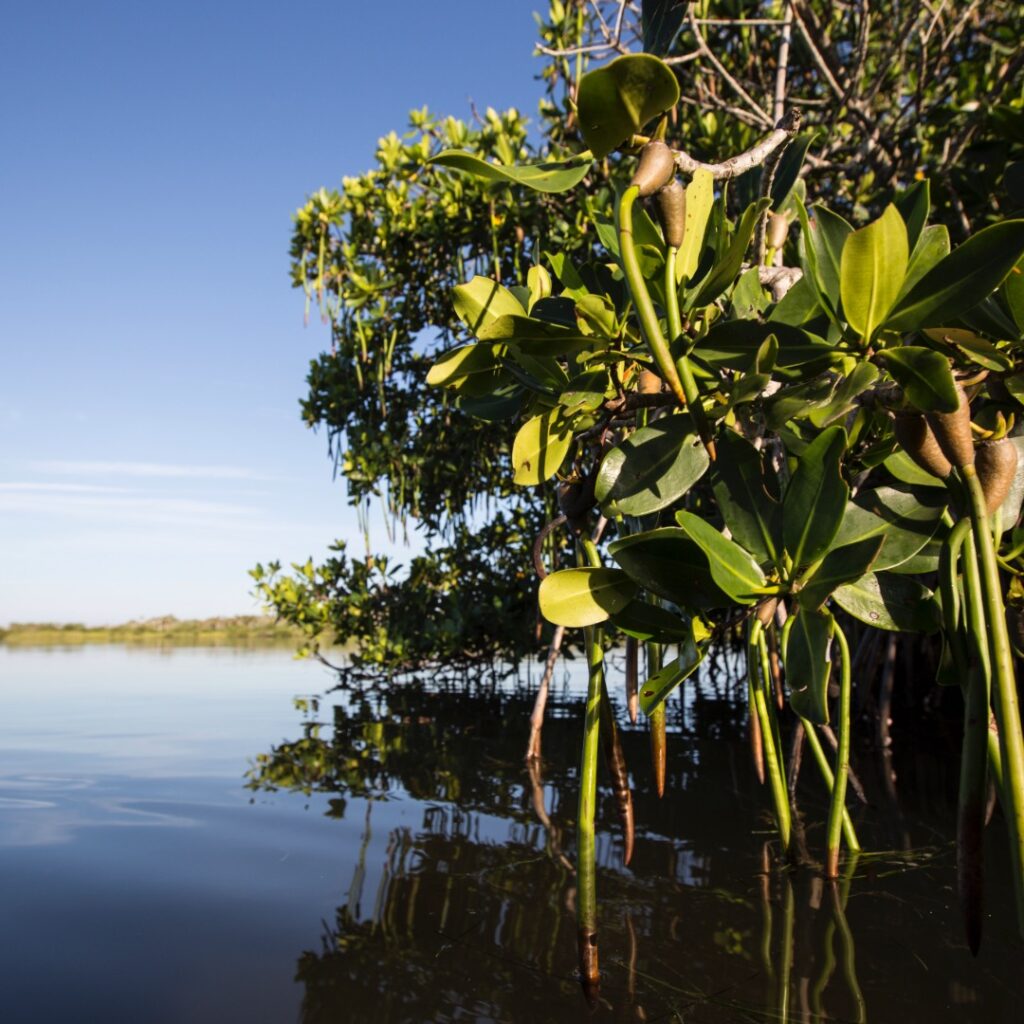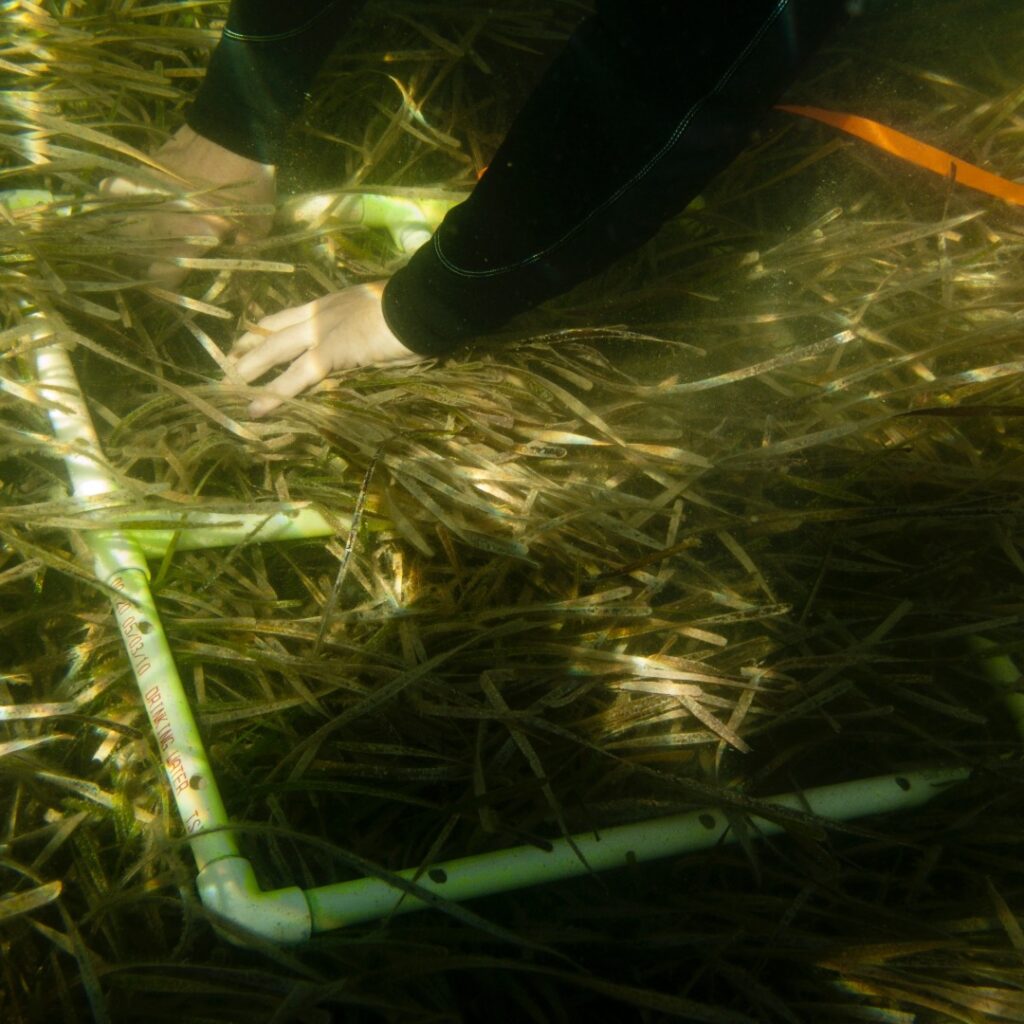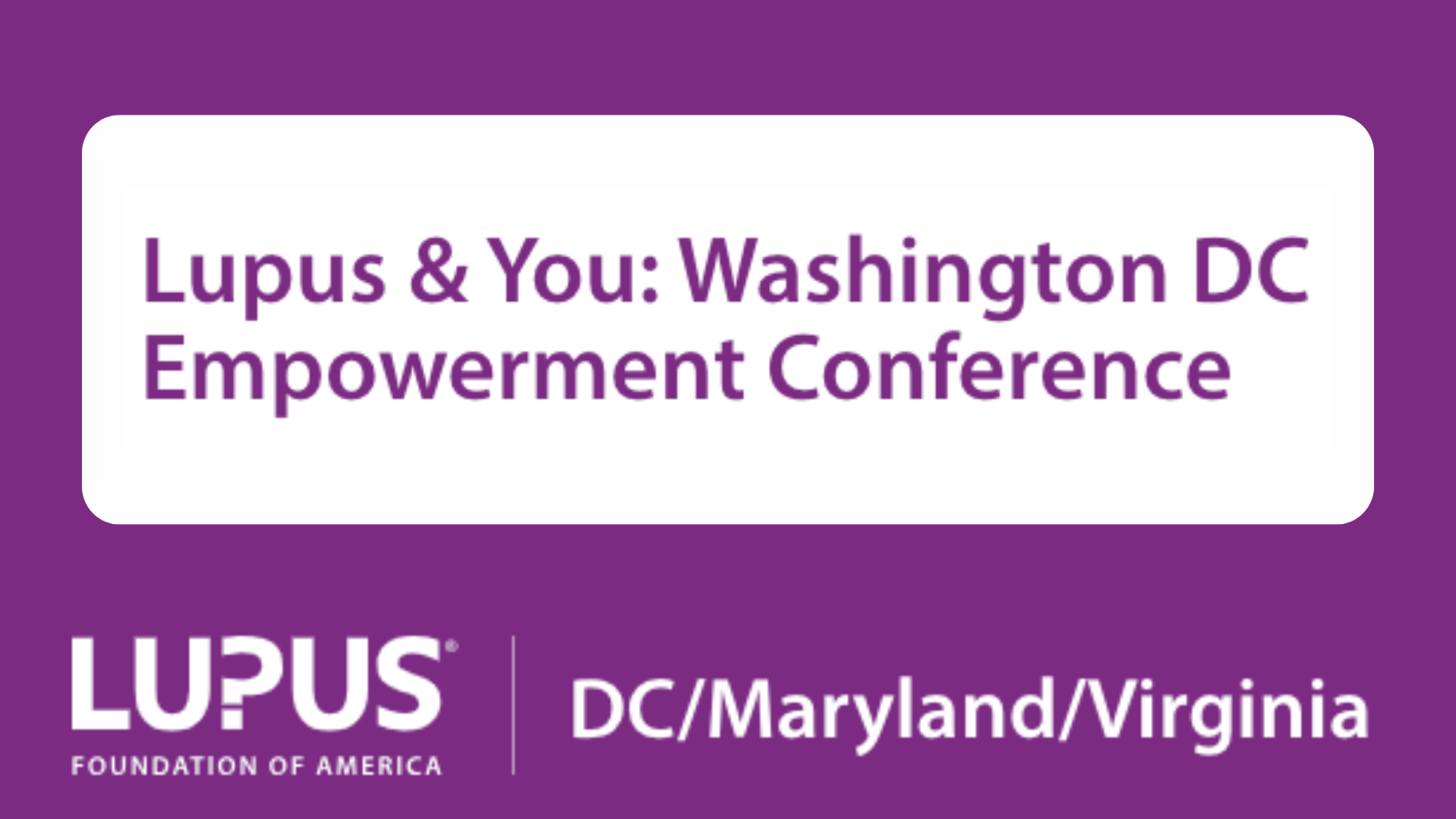Inching the Ball Forward: Embedding Policy Preferences for Nature-Based Solutions into Florida Law – Technologist
This blog is part of a series called Legal Currents, examining timely topics and trends in Florida marine and coastal law and policy.
Joe Rains Living Shoreline in Cedar Key, FL. Living shorelines provide nature-based solutions (NBS) that protect and restore shorelines from erosion. Image by Tyler Jones, UF/IFAS.
The term “nature-based solutions” (NBS) has become part of the currency of contemporary coastal conservation. The term is now finding its way into Florida’s policy framework for coastal governance, part of the State’s embrace of the broader policy paradigm of resiliency.
While many would argue that “nature-based solutions” may be a new term for an old idea, there can be no doubt that it has achieved a new level of urgency as Florida’s coastlines continue to recede and experience catastrophic storm events. The State’s policy approach to NBS is demonstrated through the regulatory process and through dedicated or preferential funding streams. Both have recently picked up steam in Florida.
NBS in Florida Law
The term “nature-based solutions” made its first appearance in the Florida Statutes in 2021, with the State’s broad embrace of coastal resiliency. Section 380.093 creates the Resilient Florida Grant Program and directs the Florida Department of Environmental Protection (FDEP) to prepare a Statewide Flooding and Sea Level Rise Resilience Plan.¹ The Resilient Florida Grant Program is a highly structured approach that sends money to local and regional governments to systematically assess their vulnerabilities to flooding and sea level rise. The program finances vulnerability assessments, and resiliency-focused projects identified by those assessments.² Among the activities that counties and municipalities can pay for with grant funds under the 2021 statute are “[f]easibility studies and the cost of permitting for nature-based solutions that reduce the impact of flooding and sea level rise.”³ This appears to mark NBS’s first appearance in Florida law as a named policy construct. In 2024, this provision was amended, presumably to clarify the legislature’s intent that both feasibility studies for nature-based solutions and the cost of permitting for projects using nature-based solutions were eligible for funding.⁴
-

Flooding near Mote Marine Lab in Sarasota, FL. Image by Dorothy Zimmerman.
Armed with a statutory mandate, FDEP initiated rulemaking to develop the methodology for ranking projects submitted by local and regional governments for Resilient Florida Grant Program funding, adopting it as Florida Administrative Code Rule 62S-8 in 2022.⁵ The adopted methodology creates a tiered scoring system that assigns points for evaluating and ranking submitted proposals. A total of 100 points can be awarded across 4 tiers. Tier 2, capped at 30 points, allows up to 3.75 points for “environmental habitat enhancement or nature-based solutions for resilience.” ⁶
Additionally, the adopted methodology awards a total of 7.5 points if the proposal demonstrates that the project will be “cost-effective.” ⁷ Among the considerations that can be used for determining cost-effectiveness is “[t]he direct and indirect economic value of ecosystem services provided by natural or nature-based solutions.” ⁸ The inclusion of a monetized ecosystem services valuation metric advances the effort to put nature-based solutions on a par with traditional infrastructure, a goal scientists and economists have been working on for some time.
Of course, to award points for “nature-based solutions” it became necessary to define it. Accordingly, FDEP adopted the following definition:
“‘Nature-based solutions’ are actions that rely upon natural processes to protect, restore, and sustainably manage ecosystems, as well as solutions that address socio-environmental challenges using natural resources and processes.”⁹
While there are myriad policy-relevant definitions of NBS across the conservation and resiliency policy literature,¹⁰ FDEP’s definition is generally consistent with most and appears similar to the definition employed by the U.S. Department of the Interior.¹¹ Some, such as those employed by Federal Emergency Management Agency (FEMA), ¹² and the National Ocean Service,¹³ are more explicit in their embrace of NBS as a type of resiliency infrastructure, something only implicit in the second phrase of the FDEP definition.
To determine the extent to which the Resilient Florida Grants Program has awarded proposals that incorporate NBS would require a deep dive into the initial round of awarded grants and the grant scoring for all proposals. However, in highly competitive grant competitions, a few points can make a significant difference.
NBS and Florida’s Newest Area of Critical State Concern
NBS made its second statutory appearance in 2023, this time in geographically specific legislation creating the Brevard Barrier Island Area of Critical State Concern (ACSC).¹⁴ This legislation is remarkable in that it employed a program from the 1970’s era of environmental and land use legislation that took a regional approach to environmental governance.¹⁵ The motivation behind creating a new ACSC was concern over the future of an island and its beaches, which harbors some of the most extensive sea turtle nesting habitats in the world. To address this concern, the Legislature adopted the ACSC designation as an appropriate policy framework to protect a charismatic and world-class resource. To implement the new ACSC, the statute establishes a series of “guiding principles” intended to guide planning, programs, and regulatory decisions at all levels of government. Included among these is one that directs agencies and units of government to support “innovative, nature-based solutions including living shorelines, and freshwater and coastal wetland restoration.”¹⁶
-

Mangroves along the banks of the Indian River Lagoon. Image by Tyler Jones, UF/IFAS.
NBS and The Proposed Mangrove Planting and Protection Act
One bill introduced in the 2024 legislative session that did not become law would have represented a significant step in the State’s movement toward institutionalizing NBS as a policy preference in coastal waters. The proposed “Mangrove Planting and Protection Act” passed the Florida House unanimously but died in the Senate Rules Committee.¹⁷
The bill aimed to amend the existing Mangrove Trimming and Preservation Act,¹⁸ and require FDEP to adopt rules for mangrove planting and restoration to address significant erosion in State designated Areas of Critical State Concern (based on the current range of mangroves, this would include the Florida Keys ACSC, the Big Cypress ACSC and the newly created Brevard Barrier Islands ACSC). The bill also sought to protect barrier and spoil islands with no specific geographic constraints, and to assist Everglades restoration and Biscayne Bay revitalization efforts.¹⁹ . The bill would also require FDEP to develop design options for living shorelines in the Biscayne Bay Aquatic Preserve.
It is not clear why the bill limited its rulemaking reach to three Areas of Critical State Concern instead of the entire range of mangroves, especially since significant erosion is not limited to ACSC, and the rulemaking provision appears to include barrier islands and spoil islands throughout the state. It is also worth noting that FDEP already has rules governing estuarine shoreline restoration more generally, and the need to single out mangroves for special rulemaking, apart from other shoreline ecosystems that provide similar resiliency benefits, is also not entirely clear. The staff analysis accompanying the bill does not shed light on these questions.²⁰
Nonetheless, emphasizing the protection, restoration, and even construction of mangrove systems makes for sound resilience policy, given their role in storm surge protection, among other benefits. Under the Bill, FDEP would be required, on a statewide basis, to identify vulnerable public and private properties along the coastline and encourage partnerships with local governmental entities to create “local mangrove protection and restoration zone programs.”²¹
FDEP would also be required to create permitting incentives and encourage the use of “new strategies for living shorelines and nature-based features.”²² Here the bill language does not refer to mangroves, so conceivably this could apply to other shoreline ecosystems such as salt marsh, though that would belie the bill title.
Importantly, the bill encourages partnerships with local governments to develop projects for coastal protection through the Resilient Florida Grant Program,²³ perhaps creating a policy preference for mangrove-related nature-based solutions within a revenue stream that is dedicated to capital infrastructure projects.
Finally, in consultation with the Division of Insurance Agent and Agency Services, FDEP would be tasked with conducting a study to determine the value of mangroves and other nature-based solutions for flood risk reduction to reduce insurance premiums and improve local government’s ratings under the FEMA Community Rating System – a program designed to reduce property owner premiums through community flood risk reduction actions.²⁴ While numerous such studies have already been conducted at different scales,²⁵ a state-endorsed study would further justify incorporating ecosystem services valuation into the resiliency economics discussion.
Recent And Proposed NBS-Inspired Agency Rulemaking
Before the term “nature-based solutions” gained currency in Florida, efforts to ease the regulatory burden on small-scale NBS projects had been underway for more than a decade, mostly to accommodate shellfish restoration and shoreline stabilization projects. In 2013, FDEP adopted a General Permit for “small-scale, low profile” oyster reef restoration ²⁶ and created an exemption for living shorelines under 500’ in length.²⁷ Work at the agency is now underway to develop three associated general permits for sea grass restoration, in-shore reef restoration, and living shorelines in varying stages of completion. The proposed General Permit for Seagrass Restoration discussed below has advanced the furthest.
-

Taking seagrass surveys off of the coast Cedar Key, Florida. Image by Tyler Jones, UF/IFAS.
The Proposed General Permit for Seagrass Restoration
In 2023, the FDEP Division of Water Resource Management initiated rulemaking to create a General Permit for Sea Grass Restoration, to be codified as Rule 62-330.637 within the larger body of environmental resources permit (ERP) rules. Public workshops were held in April and August of 2023. When it goes into effect, the General Permit will streamline seagrass restoration projects that are not proposed for mitigation or mitigation banking. Importantly, the proposed rule does not limit the size of the area that can be restored but does restrict regrading or contouring the bottom. The documentation required includes the methods used, a location map and bathymetry, along with a monitoring and reporting plan. Geographic limitations include a 100’ buffer from marked channels as well as “traditionally used” channels, docks, or other overwater structures without notice to the owner. An initial monitoring must take place within 30 days of planting and include the date of planting completion, “as-built” maps, total “sea grass units” deployed, and photographs of the site. This report must be submitted within 60 days of planting, with additional reports submitted every 90 days from the date of planting completion. These reports must document sea grass coverage and density, and provide the method used to establish coverage and density.
The pace of policy development for NBS in Florida has quickened. Science and a growing data base of experience are demonstrating efficacy.²⁸ And the emergence of resiliency as a broadly accepted coastal governance framework has created a favorable environment for policymaking. This policy development is perhaps most noticeable in the State’s commitment to viewing NBS as a form of infrastructure investment in coastal risk reduction. Regulatory developments have not kept the same pace, but here too there is both legislative and administrative policy momentum for streamlining the laws and rules that apply to NBS. Challenges of scale and federal-state coordination continue to serve as hurdles to broader and more widespread adoption of NBS in Florida.
Learn more about Florida Sea Grant’s nature-based solutions and programming here.


